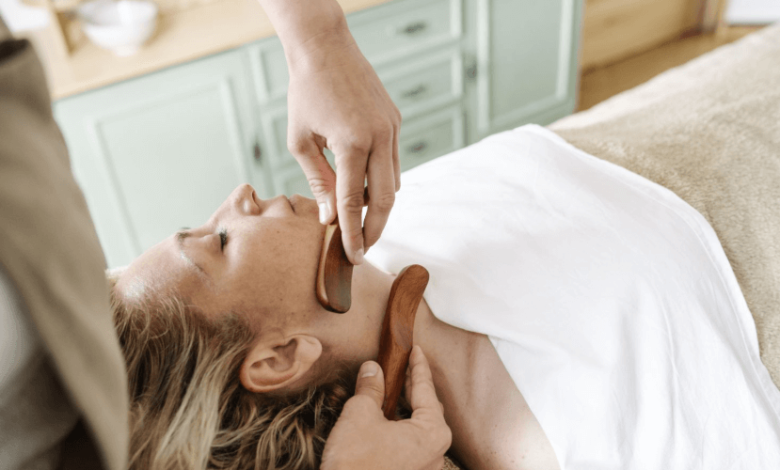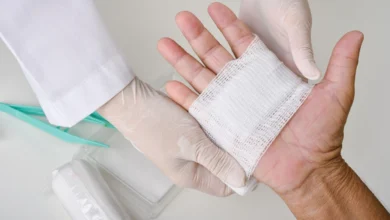How to Make the Most of Your Massage: Tips for First-Timers

Massage therapy can offer numerous benefits, from easing muscle tension to improving circulation and reducing stress. If you’re a first-timer, the process might feel overwhelming or intimidating. However, with the right approach, you can ensure a comfortable and rewarding experience. Here are some key tips to help you make the most of your massage and enjoy its full benefits.
1. Understand the Types of Massage Available
Before scheduling a massage, it’s essential to know the different types of 오피스타 massage available. Each type has its benefits and purpose. For first-timers, here’s a quick breakdown of some popular massage styles:
- Swedish Massage: A gentle, relaxing massage using long strokes to improve circulation.
- Deep Tissue Massage: More intense pressure aimed at relieving chronic muscle tension and pain.
- Hot Stone Massage: Heated stones are placed on key points of the body to soothe muscles and promote relaxation.
- Sports Massage: Focuses on preventing and treating injuries for those involved in physical activities.
- Aromatherapy Massage: Uses essential oils to enhance relaxation and provide therapeutic benefits.
Understanding which type suits your needs will help you decide which massage is best for your first experience.
2. Choose a Reputable Massage Therapist
For the best possible experience, it’s important to choose a licensed and experienced massage therapist. Look for someone who makes you feel comfortable and listens to your preferences. A good massage therapist will ask about your comfort level, preferred pressure, and any areas of tension or pain that they should focus on.
You can check reviews and ask for recommendations from friends or family to find a therapist who is well-regarded in the industry.
3. Arrive Early to Prepare and Relax
Arriving 15-20 minutes before your appointment is recommended. This extra time will allow you to check in, fill out any necessary paperwork, and ask any questions you may have. You’ll also have time to relax and adjust to the environment, which is especially helpful for those new to massage therapy.
Take a few deep breaths, relax, and mentally prepare for the experience. This way, you can settle into a calm mindset before your session begins.
4. Communicate Your Preferences and Concerns
Communication is key during any massage, particularly for first-timers. Don’t hesitate to inform your therapist of your preferences, such as the pressure level you want (light, moderate, or deep) or any areas that need extra attention.
If you’re nervous or unsure, let the therapist know. They will be able to guide you and adjust the massage to ensure you are comfortable. If something feels too intense or uncomfortable, speak up immediately – it’s important to be honest for your overall enjoyment and comfort.
5. Stay Relaxed and Breathe Deeply
Once your massage begins, try to focus on relaxing your muscles and breathing deeply. This can help release tension and allow the therapist to work more effectively. Don’t be afraid to close your eyes and clear your mind—this will enhance your experience.
Take slow, deep breaths through your nose and out through your mouth. This can help calm your nervous system and promote relaxation during the session.
6. Don’t Be Shy About Adjusting Your Position
If you ever feel uncomfortable during the massage, whether it’s due to your posture or the pressure, let your therapist know. They want you to be comfortable and can adjust accordingly. Don’t hesitate to ask them to change positions, add extra pillows, or adjust the massage techniques to suit your comfort level.
7. Hydrate Before and After the Massage
Staying hydrated is important both before and after your massage. Drinking water before your appointment helps keep your muscles hydrated and more receptive to the treatment. Afterward, massage can release toxins from your body, so drinking water will help flush them out and promote a faster recovery.
8. Avoid Eating a Heavy Meal Before Your Massage
While it’s essential to have a light meal or snack before a massage, avoid consuming a heavy, greasy meal right before your session. A full stomach can make it uncomfortable to lie down on the massage table. A light meal or snack, such as a small salad, fruit, or a smoothie, is ideal.
9. Set Realistic Expectations
Keep in mind that massage therapy is a process. If you’re going to relieve chronic pain or tension, multiple sessions may be required. Don’t expect instant miracles, but do expect relaxation, stress relief, and a general sense of well-being. Let go of any expectations that may cause unnecessary pressure on yourself to feel immediately better.
10. Ask About Aftercare Advice
After the massage, your therapist might suggest stretching exercises or lifestyle changes to maximize the benefits of the treatment. It’s a good idea to listen to their advice, especially if they recommend exercises for improved mobility or muscle relaxation.
11. Be Open to Repeating the Experience
If you enjoyed your first massage and found it beneficial, don’t hesitate to book future appointments. Regular massage therapy can help reduce stress, improve sleep, and keep your muscles flexible and relaxed. Many people who start with a one-time massage soon realize the long-term benefits and make it a regular part of their wellness routine.
FAQs:
1. How long should a first massage session be?
A typical first massage session lasts between 60 and 90 minutes. It’s a good idea to start with a 60-minute session to ensure you’re comfortable and can relax properly. As you become accustomed to the process, you may opt for longer sessions.
2. What should I wear to a massage?
Most massage therapists will ask you to undress to your comfort level. Typically, you will be draped with a towel or sheet for privacy. Wear comfortable, loose clothing to your appointment, and be prepared to undress for the session.
3. How often should I get a massage?
For first-timers, starting with once a month is a good idea. If you have specific muscle tension or pain, your therapist might suggest more frequent sessions to address your needs.
4. Will a massage hurt?
Massage should not cause pain, but it may be uncomfortable if too much pressure is applied. Be sure to communicate with your therapist if you experience any pain or discomfort, so they can adjust accordingly.
5. Can massage help with stress and anxiety?
Yes! One of the primary benefits of massage is stress relief. The soothing touch and deep relaxation can help lower cortisol levels, reduce anxiety, and promote mental clarity.
6. Can I talk during the massage?
You can choose to talk, but it’s often more beneficial to stay silent and focus on your relaxation. If you prefer talking, feel free to engage in conversation, but it’s best to let the therapist know your preference ahead of time.
Conclusion:
Getting a massage for the first time can be an exciting and relaxing experience. By following these simple tips, you can ensure you make the most out of your session. Remember to communicate with your therapist, relax, hydrate, and enjoy the calming benefits of massage therapy. Whether you’re looking to relieve stress, ease muscle tension, or simply treat yourself to some self-care, a massage is a great way to enhance your overall well-being.







